Water pipe diameters: standards, compliance, selection
The diameter of the pipe for the plumbing in a private house is a rather important characteristic, which determines the quality of the water supply system. If earlier all sizes were regulated by a single GOST USSR, then now the market presents products that meet both modern Russian standards and foreign standards, while using the Soviet classification.
So that you do not get confused in this variety, we will tell you how to choose a pipe diameter for a water supply system.
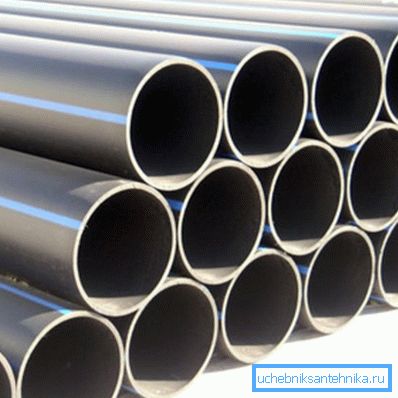
Pipe diameters
Basic characteristics and units

There are various types of pipes that are used for different purposes.
It can be:
- water and gas pipes,
- electrowelded,
- seamless,
- reinforced
- pipes for special purposes, etc.
Depending on the purpose of the product, its basic characteristics also change.
Let's look at which characteristics are basic:
- Conditional pass. A dimensionless quantity that roughly corresponds to the size of the internal diameter of the product in mm or inches and is used for the convenience of selecting and joining highways, wiring, fittings and couplings;
- External (outer) size. Denoted as Dn. The external diameter of the water pipes is measured in mm;
- Wall thickness. It is denoted as S and is measured in the same units;
- Internal diameter of water pipes. It is denoted as Dv and is measured in metric or inches. Calculated by the formula Dv = Dn - 2 * S;
- Length. It depends on the type, size and material of the product, as well as on the characteristics of production and delivery;
- Weight per meter. For steel, it is calculated using the formula m = 0.02466 * S * (Dn - S), measured in kilograms.

We consider the water supply systems of the cold-water system, so we will only talk about the parameters relevant to this class. So, to designate the dimensions of a water pipeline, one of the most important characteristics is such a parameter as the size of the conditional passage.
This value is denoted as follows: DN (according to GOST 3262-75) or DN (according to European standards, the nominal diameter is called).
A conditional pass is the inner lumen of the product rounded down or up to the nearest standard value. The standard row contains the dimensions of the internal dimensions, therefore the designation DN 15 tells us that the internal passage of this cylinder must be considered to correspond to the standard dimension of 1.5 cm.

Note! It should be understood that in practice the true internal lumen may not coincide with the standard, since the wall thickness may be different.
Now about the units. All modern guests and standards, as a rule, correspond to the metric system. However, we inherited an inch system from the 19th century, and confusion often arises here.
The fact is that engineers and installers of the past identified the details by the size of the inner lumen in inches, but the outer size was more than double the wall thickness.
So, if the product Dv was 1? or 2.54 cm, then taking into account the wall thickness of that time, its outer size was 3.35 cm. This value was fixed as “water inch” or “pipe inch”.

Similarly, pipe thread is called inch, but its true size is 33.25 mm, not 2.54 cm, which seems more logical. This is a good example of how inappropriate the traditions in science and technology.
Note! If the label size is specified? This means that its conditional internal passage or Du corresponds to the standard of 1.5 cm, since this value is closest to the size of half an inch (1.27 cm) of all the standards used.
Metal and plastic

Currently, there is an interesting picture: on the one hand, everyone recognized the advantages of plastic products, on the other - many continue to use steel and cast iron. This also contributes to its share of confusion.
The fact is that the diameter of plastic pipes for water supply is often listed as external. In this case, there is usually a pointer to the wall thickness, as in the photo:
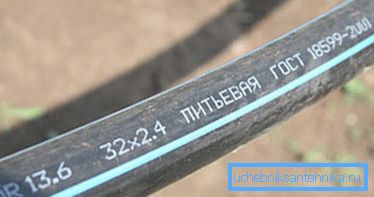
This is where the difficulty arises, since it is unclear to an unprepared installer what diameter of a pipe for a water supply system should be considered correct if two products with the same appearance are marked with 32 and 1 ?, while the inch is 2.54 cm.
Adapters for water pipes of different diameters are also often labeled in an inch system. If you are a beginner plumber or simply decide to do your own hands, then you better have on hand a table of correspondence of inch values to nominal and external values.

To connect the metal and plastic parts of the pipeline, special adapter sleeves are used, on one side of which there is a metal thread, and on the other, a smooth sleeve for plastic soldering.
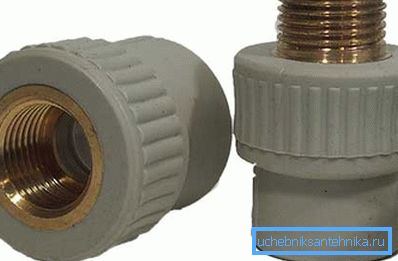
At the same time, from the side of the thread, the value in water inches can be indicated, and from the side of the plastic joint, the value adopted to designate the type that should be connected to the fitting, and quite possibly it will be Dn in mm. So it goes.
Selection of values for autonomous water supply
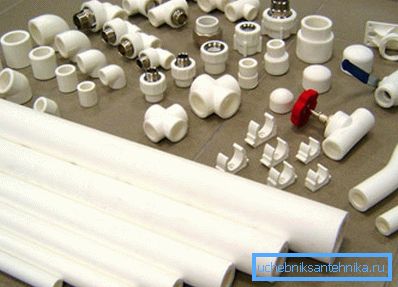
Now a few words on how to calculate the diameter of the pipe for the water supply. Various methods are used for accurate calculations: mathematical formulas with a variety of steps and techniques, the use of averaged tables and methodological manuals, various programs and online calculators have also become popular.
The mathematical method is complex and requires appropriate qualifications; it is also difficult to use engineering manuals and tables in engineering universities, and without a specialized (or at least any technical) education it will be difficult to figure out.
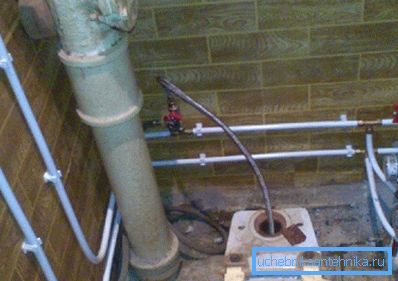
Online calculators and all kinds of calculation programs for professional designers do not cause anything but a smile.
The funny thing about them is that the most adequate of them are set up so that in 95% of calculations for apartments and private houses they give out standard values that are known and so, and when calculating serious systems, it is completely foolish to rely on such software.
Note! If you intend to do intra-apartment wiring or conduct autonomous water supply to an ordinary private house up to 3 floors, then you do not need any calculations.

The instruction is simple - we use standard common values and do not complicate our life:
- For laying the outer line from the well or well use Dn = 32 - 50 mm. Since for these purposes most often used parts made of low-pressure polyethylene (HDPE), the inch values can not be specified;
- Internal risers are made of inch parts or DN = 32 mm. Here you can use both metal and plastic systems, often use polypropylene;
- Horizontal wiring in the kitchen, bathroom and toilet - from Dn = 25 - 16 mm (3/4 ?, ?? or 3/8?).
Conclusion
For self-selection and installation of plumbing systems it is necessary to have a good understanding of the sizes adopted in this industry and their ratios. You should also be able to convert the dimensions from the metric to the inch system and know a number of standard values for the size of the conditional passage.
The video in this article will help you not to get confused in the topic.